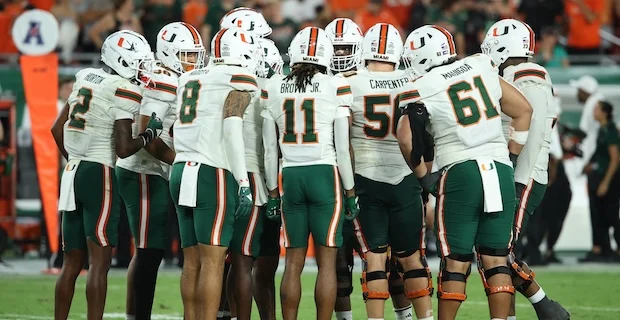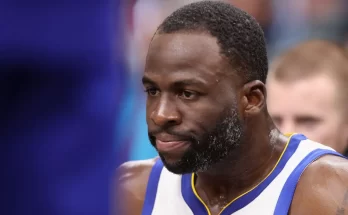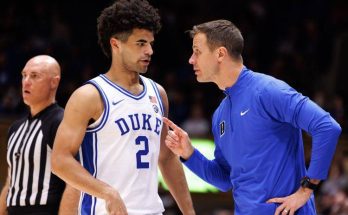Miami Hurricanes Football Program Officially Ranked as the 24th Most Valuable Team in the Nation.
The Miami Hurricanes football program being ranked as the 24th most valuable team in the nation is both a testament to its enduring legacy and a reminder of the challenges the program has faced in the modern era of college athletics. Over the decades, the Hurricanes have carved out a name for themselves as one of the most recognizable brands in college football, producing championship teams, iconic players, and unforgettable moments. However, the landscape of college sports has evolved rapidly, with new financial structures, media deals, NIL opportunities, and competitive dynamics shaping the value of each program. For Miami to secure the No. 24 spot in overall valuation, it reflects not only the history and prestige of the program but also its ability to remain relevant in a crowded and competitive environment.
The Hurricanes’ storied history plays a major role in their valuation. Miami is not just any football program; it is a powerhouse that has contributed significantly to the culture of college football. With five national championships, an impressive roster of NFL alumni, and an era of dominance during the 1980s and early 2000s, Miami has cemented itself as a brand that resonates with fans across the country. Legendary players like Ed Reed, Ray Lewis, Michael Irvin, Warren Sapp, and Sean Taylor have become household names, not just because of their success at the collegiate level but also because of their remarkable careers in the NFL. The Hurricanes’ reputation for producing elite talent is part of what has helped the program retain its value, as it continues to be viewed as a pipeline for future professional athletes.
The financial value of a college football program is determined by several factors, including revenue from ticket sales, merchandise, television rights, sponsorships, and contributions from alumni and boosters. Miami benefits from being located in a major media market, as South Florida provides a large and diverse fan base. The Hurricanes have always had a strong presence in the local community, but their appeal also extends nationally. Even during seasons when the team has not been at its competitive peak, Miami’s brand has continued to draw attention. This sustained interest is crucial for maintaining financial value, especially in an era where college football programs must compete for television slots, prime recruiting talent, and sponsorships.
In recent years, the Hurricanes have faced their share of challenges. The team has not consistently been in the national championship conversation, and fluctuating performances on the field have impacted its prominence. Yet, the program’s investment in new facilities, high-profile coaching hires, and aggressive recruiting strategies indicates a determination to return to the upper echelon of college football. The hiring of Mario Cristobal as head coach, for instance, was a major statement of intent. Cristobal, a Miami native and former Hurricane himself, has brought an intense focus on building a culture of excellence, attracting top-tier talent, and restoring the program’s competitive edge.
The introduction of the Name, Image, and Likeness (NIL) era has also brought significant changes to how programs like Miami are valued. In this new landscape, players have the ability to earn money through endorsements and sponsorships, which has further intertwined the financial and athletic aspects of college football. Miami, with its large market and connections to influential alumni, is in a unique position to take advantage of this shift. The school’s boosters and business community have actively supported NIL initiatives, ensuring that the program remains competitive when it comes to attracting high-profile recruits. The NIL era has added another dimension to the valuation of college programs, and Miami’s ability to adapt has played a role in maintaining its place among the top 25.
Another factor contributing to the Hurricanes’ value is their strong media presence. Miami football has always had a certain flair and swagger that attracts attention. From the days of the iconic “Turnover Chain” to the program’s celebrated history of producing bold, charismatic players, the Hurricanes have consistently remained in the spotlight. Media attention translates directly into financial value, as networks are more willing to invest in programs that can deliver high ratings and national interest. Miami’s games often draw significant viewership, particularly when facing rivals like Florida State, Florida, or Notre Dame. These rivalry games not only fuel fan engagement but also generate substantial revenue.
Facilities have also played a key role in boosting Miami’s value. In recent years, the school has invested heavily in upgrading its athletic infrastructure, including the Carol Soffer Indoor Practice Facility and enhancements to other training areas. Such investments not only help in recruiting elite talent but also demonstrate the program’s commitment to remaining competitive in a rapidly evolving landscape. Modern facilities are essential for player development, fan engagement, and attracting top-tier coaching staff. The Hurricanes’ efforts to modernize their program have not gone unnoticed, and they have contributed to sustaining Miami’s position as one of the more valuable teams in the country.
Alumni support is another cornerstone of Miami’s financial stability. The Hurricanes boast one of the most passionate and influential alumni networks in college sports. Former players often return to campus to mentor younger athletes, donate to the program, or contribute in other meaningful ways. This strong sense of community and loyalty is part of what has kept the program afloat during challenging times. Alumni not only provide financial support but also help raise the program’s profile through their success in the NFL and other professional ventures.
Recruiting success is also directly linked to program valuation. Miami’s location in South Florida gives it access to one of the richest recruiting grounds in the country. The region is a hotbed for football talent, producing some of the best high school athletes year after year. The Hurricanes have traditionally excelled at keeping local talent close to home, and when they succeed in landing top prospects, it enhances both their performance and their brand value. High-profile recruits generate excitement among fans, increase merchandise sales, and draw media attention. As Mario Cristobal and his staff continue to build momentum on the recruiting trail, it’s likely that Miami’s value will grow in the coming years.
Beyond the field, Miami’s partnerships and sponsorship deals also contribute to its valuation. The program has longstanding relationships with major brands and apparel companies that view the Hurricanes as a valuable marketing platform. These partnerships are not just about money; they also enhance the visibility of the program, helping to keep Miami’s iconic “U” logo in the public eye. The Hurricanes’ brand recognition is one of their greatest strengths, and maintaining these relationships is crucial to sustaining and increasing their value.
The ranking of No. 24 may be a point of pride for Miami, but it is also a challenge to do even better. Programs like Alabama, Georgia, Ohio State, and Texas currently dominate the top spots in terms of valuation, largely because of consistent on-field success, massive fan bases, and lucrative television deals. For Miami to climb higher in the rankings, it will need to not only sustain financial growth but also achieve consistent success on the field. Winning championships, competing in major bowl games, and consistently being part of the playoff conversation are the kinds of achievements that can significantly boost a program’s value.
Looking forward, the Hurricanes have all the pieces needed to rise higher in both valuation and competitive standing. With a committed administration, an energized fan base, and a history of greatness to build upon, the future looks promising. The team’s presence in a major market like Miami gives it an inherent advantage over many other programs, and with continued investment in facilities, recruiting, and NIL initiatives, the Hurricanes have the potential to return to the level of dominance they enjoyed in their glory years.
It’s also worth noting that the broader landscape of college football is changing. Conference realignments, new playoff formats, and ever-expanding media deals will continue to shape the financial fortunes of programs across the country. Miami’s place in the Atlantic Coast Conference (ACC) remains a key part of its identity, but the school must be prepared to adapt to any shifts in the collegiate sports ecosystem. The ACC’s television contracts and revenue distribution models will play a significant role in determining how much financial firepower programs like Miami can leverage in the coming years.
The Hurricanes’ legacy is one of resilience, swagger, and excellence. Being ranked No. 24 in value is a reflection of both the past glories and the current efforts to keep the program strong. While some might see it as a step down from the heights Miami once reached, it’s important to recognize the competitive nature of college football today. With so many programs investing heavily in their football operations, maintaining a place in the top 25 of overall valuation is no small feat.
The path ahead for Miami is clear: continue building on its rich tradition, invest wisely in the future, and leverage its unique advantages in recruiting, location, and brand recognition. The Hurricanes are not just aiming to remain relevant; they are aiming to reclaim their place among the elite. If the program’s current trajectory under Mario Cristobal is any indication, the Hurricanes are well-positioned to rise both on the field and in the financial rankings.
Miami’s ranking as the 24th most valuable football program is both a milestone and a starting point for greater achievements. The combination of history, alumni support, recruiting power, media presence, and strategic investments has kept the Hurricanes firmly in the national conversation. As college football continues to evolve, the Hurricanes’ ability to adapt, innovate, and win will determine how high they can climb in both valuation and legacy. The story of Miami football is far from over, and with its proud tradition and passionate fan base, the program is poised to write its next great chapter.



